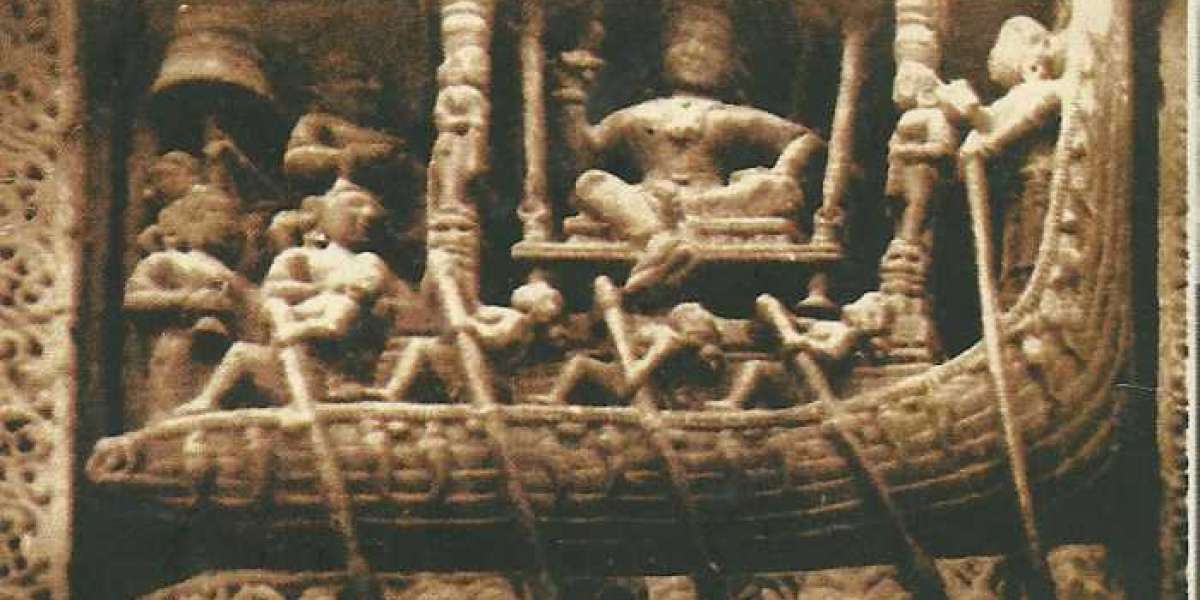The period c.200BCE-600CE was historically significant from several points of view. City life spread to new regions of the subcontinent. Craftspersons produced larger quantities and more varied goods than before, trade within the subcontinent and between its region and other lands flourished, and money was increasingly used as a medium of exchange.
As for literary sources, in the context of North India, Buddhist texts such as the Angavajji, Lalitavistara, Milindapanha and Mahavastu refer to many professions, crafts and guilds of craftspersons and traders. The Milindapanha alone mentions some 60 types of crafts. The localisation of crafts is evident from Jataka stories which mention villages named after the main profession of their inhabitants. In the context of South India, Sangam literature indicates the existence of many specialised crafts such as weaving, gem working, shell working and metal working.
There are references to satthavahakula(family of caravan traders), kumbhakarna kula (potters’ family), setthikula (family of merchant-cum-bankers), kammarakula (metal smiths’ family), atavirakkhikakula (family of forest guards), dhannavanijakula (grain merchants family), pannikakula (greengrocers’ family), pasanakottakakula (stone grinders’ family).
The variety of craft specialisation is also evident from inscriptions from different parts of the subcontinent. Donative inscriptions from sites such as Sanchi, Bharhut and Mathura record the pious gifts of various kinds of artisans, potters, weavers, masons, goldsmiths, carpenters, sculptors and ivory workers.
Those from western Deccan mention occupational groups such as jewellers (manikara), goldsmith (suvankar), blacksmiths (kamara), ironmongers (loha-vanij), perfumers (gadhika) and stone masons (selavadhaki). Such inscriptions reflect the proximity of craftsperson, their social standing and their connections with burgeoning religious centres.
During the period 200BCE-300BCE, there was a significant increase in the number of guilds, as well as in their scale of activities. The works of Moti Chandra, H.P Ray and KK Thapliyal have collected much of the data regarding this issue. The Jatakas refer to 18 guilds which sums to be a conventional figure and the actual number of guilds may have varied in different places.
The Mahavastu mentions many guilds of Kapilavastu- gold workers, workers in chank shell, ivory carvers, lapidaries, stone carvers perfumers etc.
Guilds were also mentioned in inscriptions. For example- inscription of western Deccan- guilds of weavers, potters, flour makers, oil millers, bamboo workers, and merchants. Inscription of Junar records the gift of a cave consisting of 7 cells and a cistern by a guild of corn dealers (dhanika seni). A 3rd c. Nasik Inscription of the time of Abhira king Ishvarasena mentions several guilds of crafts and trades in this city. 2nd c. CE inscription from Nasik refers to 2 guilds of weavers at Govardhana.
Two Tamil-Brahmi Inscriptions from Mangulam near Madurai mention the merchant guild of Vellarsi. One of these indicates that members of this guild collectively contributed towards the craving of stone beds for Jaina ascetics in one of the caves. The high status enjoyed by the members of the merchant guilds is indicated by the title kaviti given to Antai Assutan. Kaviti was an honorific title bestowed by kings on ministers, nobles and merchants. This guild member seems to have been the superintendent of pearls in the Pandya administration.
Trade in this period was facilitated by the expansion of the money economy and the issuing of small denominational coins by the Kushanas and Satavahanas paved the way for the use of coins for small-scale transactions.








